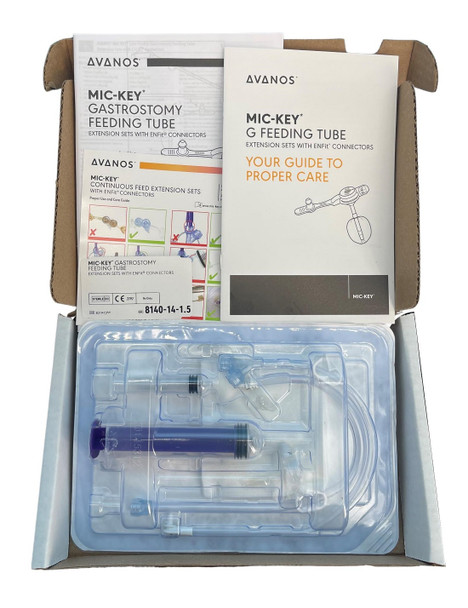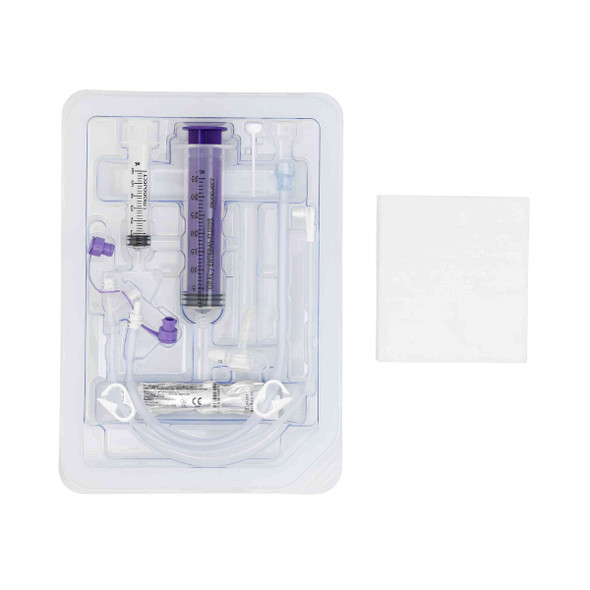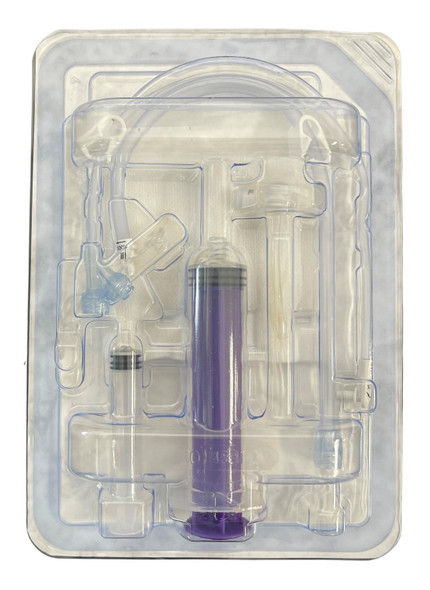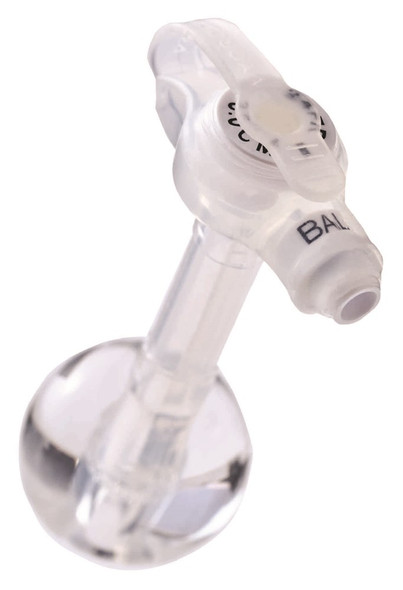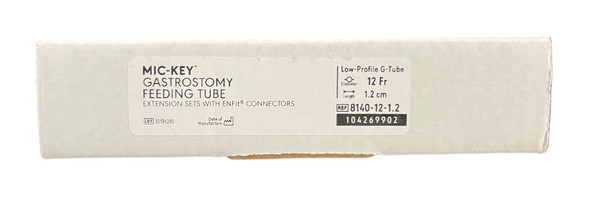Description
Description
MIC-KEY* Low-Profile Gastrostomy Feeding Tube with ENFit® Connectors and SECUR-LOK* (CE) is unobtrusive and easy to conceal, making it an ideal feeding tube for virtually all individuals. It features a high clarity medical grade silicone construction, designed for visibility and drapability. The design also features an inflatable internal retention balloon, as well as a patented universal connector designed to preserve tube life and minimize unintentional disconnects.
Avanos Medical, the pioneer in the development of the first balloon retained tube designed for gastrostomy feeding, offers a wide variety of innovative, high-quality enteral feeding tubes and accessories uniquely designed for delivering nutrition and medication to pediatrics and adults.
Product Features
- Kit Components: – MIC-KEY* Low-Profile Gastrostomy Feeding Tube with ENFit® Connectors – Insertion Stylet (US Only) – Water-soluble Lubricant (US Only) – Continuous Feed Extension Set with ENFit® Connector, 12 inch – Bolus Feed Extension Set with ENFit® Connector, 12 inch – 6ml Luer Slip Syringe – 35ml ENFit® Enteral Feeding Syringe – Gauze Pad
- Easy to conceal
- Limited interference with clothing
- Various sizes available
- Sterile
- Medical grade silicone construction
- Natural rubber, latex-free
- Low-profile design
The dimensions and properties listed can vary within pre-established specifications. This page was created using the most recent information. In the interest of continuous improvement, the characteristics of the product may change without prior notice.
Link to Other Mic-Key Products Range
| Mic-Key Low-Profile Balloon | |||
| Gastrostomy with Enfit Connectors, ETO Sterile (Fr) | Jejunal Extension Set with Enfit Connectors Gamma sterile (Fr) | Gastric-Jejunal Extension Set with Enfit Connectors Gamma sterile (Fr) Endoscopic/Radiologic Placement | Extension Sets |
| 12 | 14,18 | 14, 16 , 18 , 22 | Medication Extension Set 0142 |
| 14 | Extension Set Right Angel 0141 | ||
| 16 | Bolus Feed Extension Set Straight 0143 | ||
| 18 | Bolus Extension Set Right Angel 0144 | ||
| 20 | |||
| 24 | |||
12Fr and 14Fr:
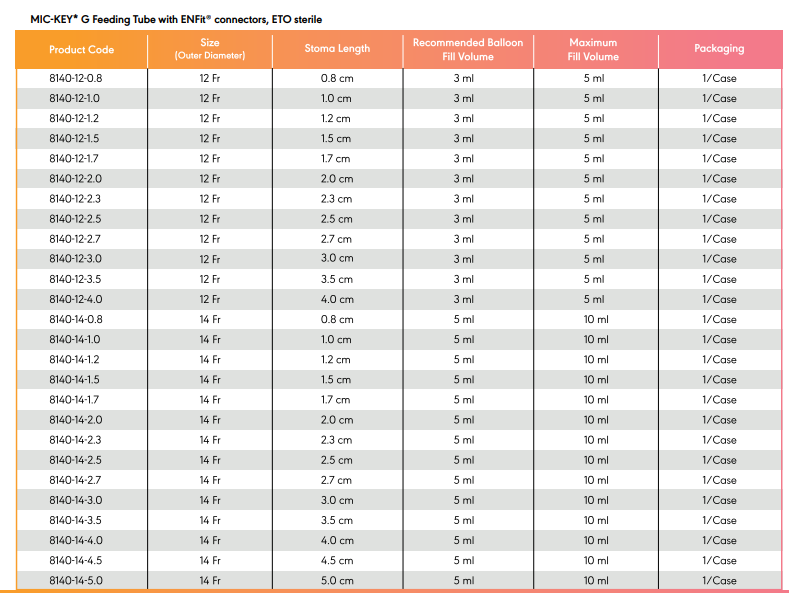
16Fr &18Fr:
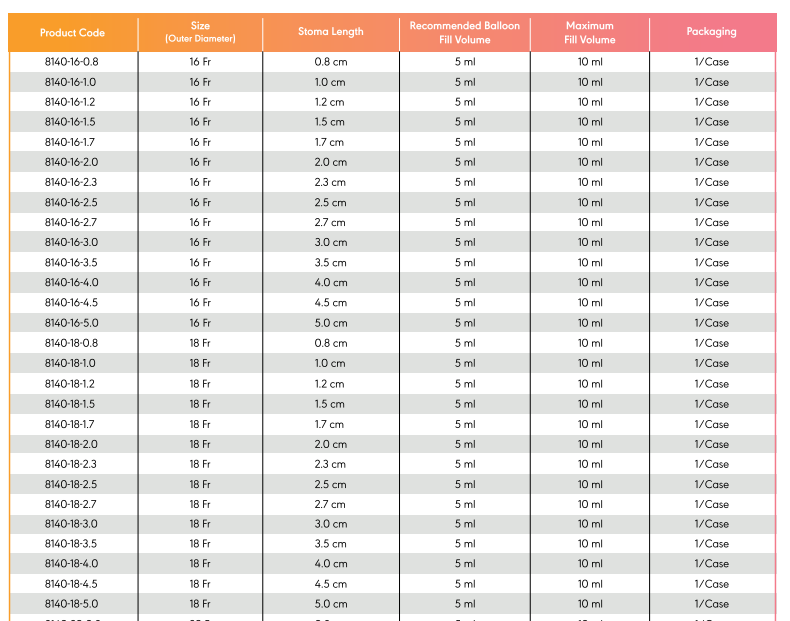
20Fr & 24Fr:
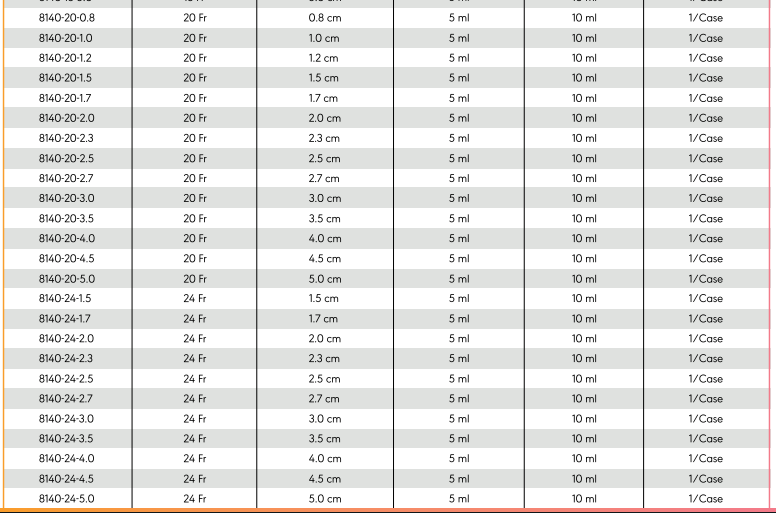
FAQ
What is the difference between mic and mic key?
Mic Tubes:
- "Mic" is a common abbreviation for "microporous" or "low-profile" tubes.
- These tubes are typically referred to as "Mic" tubes when discussing gastrostomy or jejunostomy feeding tubes.
- They are designed to be discreet and lie flat against the skin, minimizing visibility.
- Mic tubes are suitable for patients who require long-term enteral feeding and prefer a low-profile, less obtrusive tube.
mic key Tubes:
- "mic key" refers specifically to the brand name of a widely used gastrostomy feeding tube, often referred to simply as "mic key" tubes.
- mic key tubes are a type of "Mic" tube that includes features such as an Enfit connector, which ensures compatibility with other enteral feeding equipment.
- They are known for their reliability, ease of use, and compatibility with various feeding systems, making them a preferred choice for many patients and healthcare providers.
Both Mic and mic key tubes serve the essential purpose of providing enteral nutrition to individuals who cannot consume food orally. The choice between them depends on the patient's specific needs, preferences, and the healthcare provider's recommendations.
What is the Feeding mic key?
The "Feeding mic key" is a specific type of enteral feeding tube designed to provide nutrition and hydration directly into the stomach or jejunum for patients who are unable to eat or drink orally. Here's more information about the "Feeding mic key" and its purpose:
The "Feeding mic key" is a reliable and commonly used gastrostomy or jejunostomy feeding tube, especially within the Avanos brand of medical products. It serves the crucial purpose of delivering enteral nutrition to individuals who have difficulty swallowing, have a medical condition that hinders their ability to eat, or require long-term nutritional support. This type of enteral feeding tube is inserted through a small incision in the abdominal wall and into the stomach (or jejunum, depending on the patient's needs) to facilitate direct feeding. The "Feeding mic key" is compatible with enteral feeding equipment, including syringes and feeding pumps, ensuring accurate and controlled delivery of nutrition.
The "Feeding mic key" is a trusted choice for healthcare professionals and patients alike, providing a safe and effective means of delivering essential nutrients to those who require enteral feeding support. It is essential to consult with a healthcare provider to determine the most suitable feeding tube option based on individual patient needs and medical conditions.
When Should mic key Button Be Replaced?
The mic key button, an integral component of a peg gastrostomy tube or peg percutaneous endoscopic gastrostomy tube, plays a crucial role in enteral feeding. Understanding when it should be replaced is essential for maintaining the patient's health and safety.
Circumstances for Replacement:
1. Routine Replacement:
- mic key buttons typically have a recommended usage lifespan, which is usually between 6 to 12 months. It's advisable to replace them as part of routine maintenance, even if they appear to be functioning correctly.
- Routine replacements help ensure the integrity of the device and reduce the risk of complications.
2. Signs of Wear and Damage:
- Any visible signs of wear, damage, or deterioration should prompt immediate replacement. These signs may include cracks, tears, or changes in the button's color or texture.
- If the button becomes loose or does not securely fit in the stoma, it should be replaced promptly to prevent leakage or dislodgment.
3. Malfunction or Blockage:
- If the mic key button malfunctions, becomes clogged, or does not allow for the proper administration of enteral nutrition, it should be replaced immediately.
- A malfunctioning button can lead to inadequate feeding or complications for the patient.
Importance of Regular Maintenance:
Regular maintenance and monitoring of the mic key button are crucial to ensuring the patient's well-being. This includes:
- Scheduled Assessments: Healthcare providers should conduct regular assessments of the button's condition and functionality during routine check-ups.
- Proper Cleaning: Following recommended cleaning and care guidelines is essential to prevent blockages and maintain hygiene.
In conclusion, the timely replacement of the mic key button in peg gastrostomy or peg percutaneous endoscopic gastrostomy tubes is essential for ensuring the patient's safety and the effectiveness of enteral feeding. Regular maintenance and vigilance in monitoring the button's condition are integral parts of providing quality care to individuals who rely on these devices for their nutritional needs.
How to Use a mic-key Feeding Tube?
Using a mic-key feeding tube is an essential skill for caregivers and healthcare professionals when providing enteral nutrition. Below are step-by-step instructions on how to properly use the mic-key feeding tube, including important considerations:
Step 1: Gather Supplies
- Ensure you have all the necessary supplies: the mic-key feeding tube, a clean syringe, a compatible extension set, enteral feeding formula, clean water, and gloves for hygiene.
Step 2: Hand Hygiene
- Wash your hands thoroughly with soap and water, or use hand sanitizer to maintain cleanliness.
Step 3: Prepare the Formula
- Follow the instructions on the enteral feeding formula packaging to prepare the appropriate amount of formula.
- Ensure that the formula is at room temperature.
Step 4: Assemble the Extension Set
- Attach the extension set securely to the mic-key feeding tube.
Step 5: Verify Placement
- Confirm the correct placement of the mic-key feeding tube by checking the external "anchor" or "buried bumper" to ensure it's flush against the skin.
Step 6: Connect the Syringe
- Connect a clean syringe to the extension set.
Step 7: Administer Formula
- Slowly and gently administer the enteral feeding formula into the feeding tube using the syringe.
- Avoid forceful or rapid feeding to prevent discomfort or complications.
Step 8: Flush with Water
- After feeding, flush the feeding tube with clean water to clear any residual formula and prevent clogs.
- Ensure the tube is thoroughly flushed.
Step 9: Close the Cap
- Close the cap securely to keep the feeding tube closed and maintain cleanliness.
Step 10: Clean and Store Supplies
- Properly clean and store all supplies, including the mic-key feeding tube and extension set, according to manufacturer recommendations.


